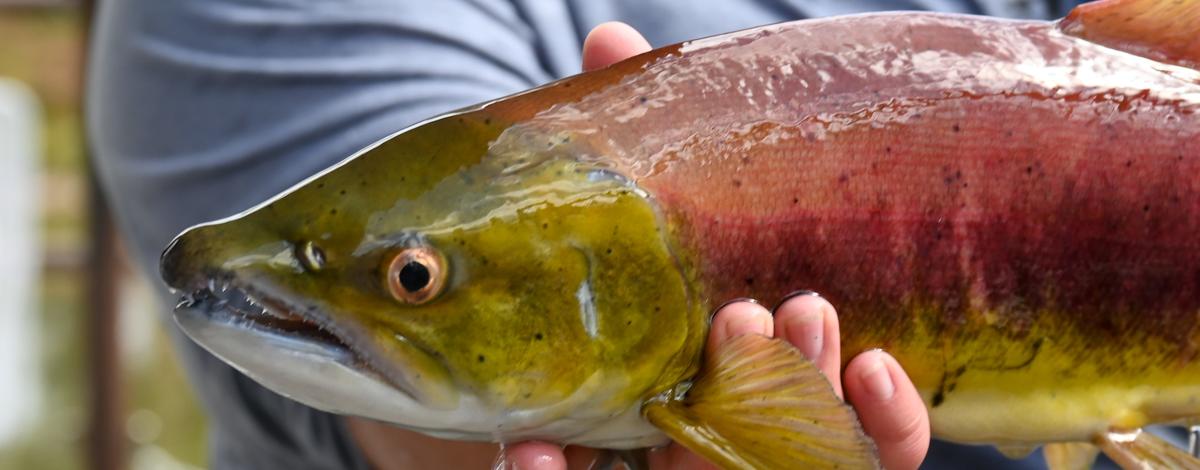Idaho Fish and Game is seeing an above-average sockeye return this summer, and biologists are ensuring fish will be available for spawning by trapping them at Lower Granite Dam near Lewiston and trucking them to the Eagle Hatchery near Boise.
The Upper Salmon River has been unseasonably warm, and potentially deadly to sockeye. That stretch is the last leg of a 900-mile journey that Idaho’s endangered sockeye must make before arriving in the Sawtooth Basin near Stanley. Fish and Game staff trucked 142 sockeye from Lower Granite Dam through July 18 with more planned. The department also trucked sockeye in 2015 and 2021 when weather conditions were similar.
“We prefer to let these fish return naturally, but we have to balance that with knowing they’re heading toward a heat wave, so we decided to safely reroute some of them to Eagle to ensure we have fish to produce the next generation,” said Lance Hebdon, Idaho Fish and Game’s Fisheries Bureau Chief. “We are only trucking a portion of the fish, so we still expect some will make their full migration.”
Through mid July, more than 925 sockeye had reached Lower Granite Dam about 30 miles west of Lewiston. Sockeye returns at Lower Granite typically peak in mid July, and fish will continue to return throughout summer. The run is already the seventh-highest return to Lower Granite since fish counting began there in 1975, and more fish are due to arrive.
After crossing Lower Granite Dam, the fish still have about 400 miles to reach the Sawtooth Basin, and the first sockeye typically arrives at Sawtooth fish trap around the third week in July.
Since an intensive sockeye recovery project started in the early 1990s that included Fish and Game and many other partners, Fish and Game has employed a “spread the risk” strategy to ensure their survival, which aligns with trapping and hauling fish. That strategy also includes having sockeye naturally migrating to the Pacific and back while others are raised to adults in hatcheries to ensure spawners are available if none – or only a few – sockeye return from the Pacific.
The combined state, federal and tribal efforts have bolstered a sockeye population that was on the brink of extinction. Idaho sockeye were listed under the federal Endangered Species Act in 1991, and only 23 sockeye returned between 1991-99, including two years when no sockeye returned.
The annual sockeye runs to the Sawtooth Basin in the last decade have averaged 369 fish with a high of 1,579 in 2014 to a low of 17 in 2019.

